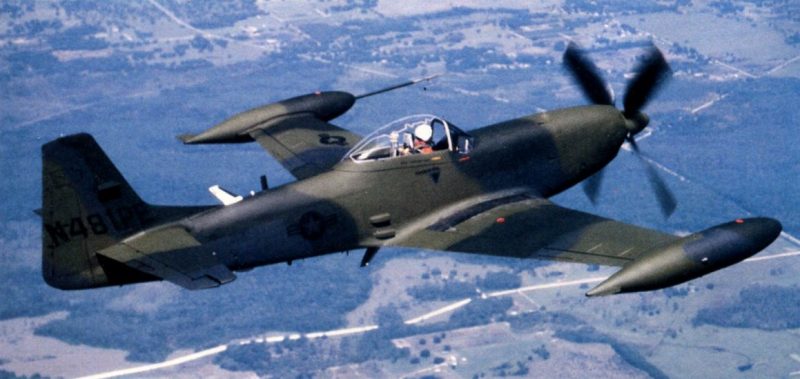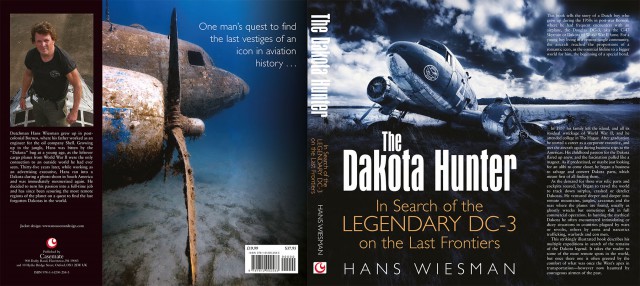Believe it or not, this was a bitter reality in 1969 as the 4-Days War broke out between Honduras and El Salvador, in which only vintage piston powered aircraft were involved that shot each other out of the air.
During my visit to this Museum, I came also to see the C-47’s that they had still operational in numbers, but entry to these planes was strictly forbidden, as if we came to spy for El Salvador a Hi Tech aircraft. Paranoia or not, the relations between the neighboring nations are still “awkward”, to say the least.
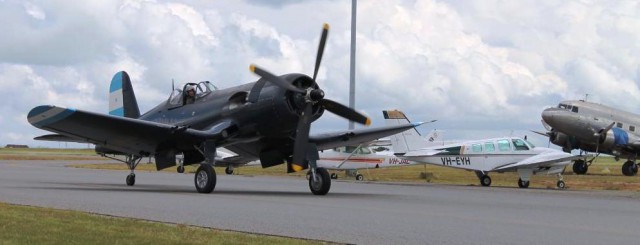
Imagine, the rest of the World had only attention for the Hi-Tech Supersonic Fighter Jets as Phantoms and Mig-21’s from USA and USSR that fought over Vietnam and the Sinai Desert. And while the NASA was just about to land the first man on the moon on July 20, 1969, there was a little war going on in Central America that was totally ignored by the World’s Mass Media as no one wanted to miss a glimpse of the historic first step on the moon, about to be made by Neil Armstrong.
After years of tension and skirmishes between the neighboring states Honduras and El Salvador over illegal border crossing and settling of Salvadoran peasants in the larger and sparsely populated Honduras, their disputes came to a sudden climax as both National Soccer teams were running in the same pool for the World Cup 1970 preliminaries. After 3 matches, El Salvador won that selection, but riots broke out in Honduras in which Salvadoran immigrants were molested and expelled or simply fled back home, leaving all their properties behind.
EL Salvador’s President Generalissimo Arelllano considered this an aggressive act and took as a retaliation the unwise decision to invade Honduras with his Army and to make with his Air Force a surprise aerial attack on Toncontin Air Force base, located next to the Honduran Capital Tegucigalpa.
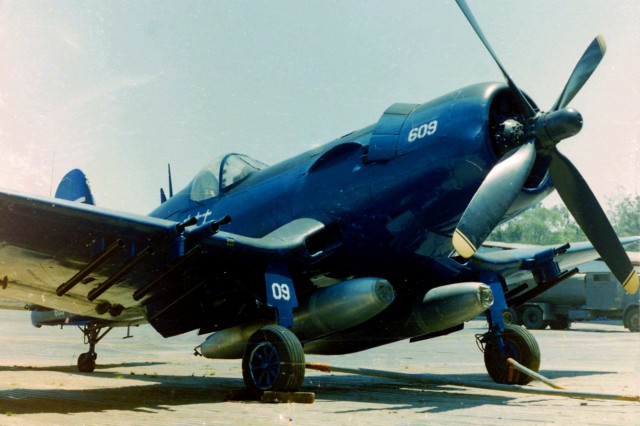
Theoretically, this planned assault could have meant a very serious, even fatal blow to the Honduras Air Force (FAH). There was no prior war declaration, the element of surprise was 100% and half of the Enemy’s total Air Force was parked out there without any protection!
But as often with such unreal opportunities in sight, Murphy’s Law was applicable without prior notice and all what could go wrong went wrong, to the point of an almost hilarious act if this would have taken place in a film. But this was a real world of war mongers: both nations had since a year an US embargo on arms export, due to their outspoken offensive plans and hostile relations.
Hence, both their Air Forces where not exactly equipped with the latest fads as Jet Fighters, Radar or early warning air space defense systems. Instead, they both flew with vintage WWII piston prop fighters and with a lack of bombers, they had converted their Dakota C-47 transports to makeshift Bombers, be it with a limited payload and accuracy.
In 1967, El Salvador (and Indonesia) received from USA the Cavalier built Mustang II with structural improvements. The wing was strengthened to carry a total of 4,000 lbs of ordnance and additionally large wingtip tanks and weapon hard points were installed, along with a new Merlin V-1650-724 aero engine. These in Florida newly built Cavalier Mustangs also received a taller tail and in many of them a second seat for the observer/ passenger was mounted.
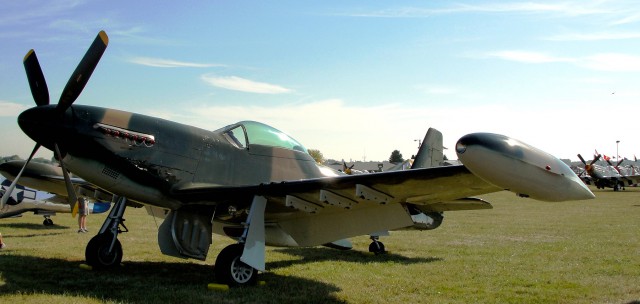
Both Air Forces were in dire need for more aircraft during the build up of their evil intentions and tried to circumvent the US embargo with most inventive ways to find the loopholes. The more aggressive FAS (the Salvadoran AF) managed to buy in the USA 7 P-51’s from private owners who flew those Cavalier Mustangs in the American Air Show circuit! These aircraft were the “demilitarized” versions (Cavalier F-51D) and needed some conversion to become a “hot hatch”.
These non armed but fast aircraft went via Haiti and a handful of Banana Republics to El Salvador for a speedy conversion to a deadly fighter. Guns, sights and hard points were remounted for the imminent showdown with their opponents from FAH , who flew with 10-12 obsolete but potent Vought Corsairs F-4U’s.
FAS had also 10- 12 Corsairs operational in the FG-1/ FG-1D Navy version (built by Goodyear), all of them delivered by the USA in earlier years, in order to keep the balance between the nations in numbers and capability in air strike power. Jets were strictly forbidden wet dreams, even the pronouncing of the J-word was an offense. But FAS who had more fighters from the outset with their Mustang II’s and tried to further outnumber FAH with the stealthy purchase of the US based Cavalier Mustangs, in an attempt to double their P-51 fleet.
On 14 July 1969 by end of the day, the aerial war started with a surprise attack on Honduras main Air Force base Toncontin. Two Dakota/C-47’s and two P-51’s as fighter escorts were taking off from the Salvadoran Ilopongo AFB for a combined assault, but for a variety of reasons, all aircraft missed their rendezvous and finally only one single C-47 completed its flight over enemy territory to Tegucigalpa and flew over the unprotected airfield with the rows of Corsairs, C-47’s, T-6’s Texans and T-28’s Trojans parked right below them. Not to be missed but …. well, just keep reading.
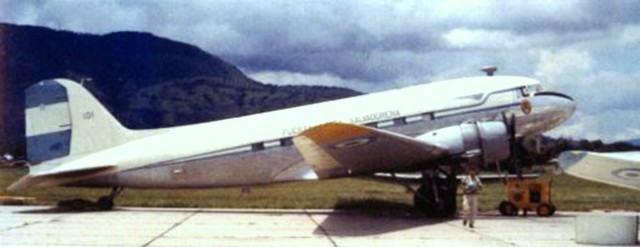
Here follows an excerpt from my book “The Dakota Hunter”, describing the quite unbelievable flow of events that took place during that assault:
“Once over their target, the Salvadorian pilots made a low pass over the undefended air base, saw all of the enemy’s fighters parked out in the open on the platform, and must have concluded that this was a once-in-a-lifetime chance to carry out an annihilating hit-and-run. It seemed almost too good to be true, and they probably found themselves dreaming of their arrival back in El Salvador to a thunderous ticker-tape reception as national heroes.
However, although Dakotas are versatile and rugged planes, they were never designed for the role of bomber. On the second low pass, two crew members rolled a few bombs out by hand, over the threshold of the open gate-cargo doors that had already been removed. While the bombs flashed down under their enthusiastic shouts of “Geronimo,” they quickly found out that this was not the most accurate way of hitting a target. After two more passes and with all of their 6 bombs gone, they had merely hit the runway in spots here and there but had missed every fighter plane below! Those fighters were now being prepared for a counterattack, and as soon as the Salvadorians saw the pilots scrambling to their aircraft they decided it was about time to hightail it back home”.
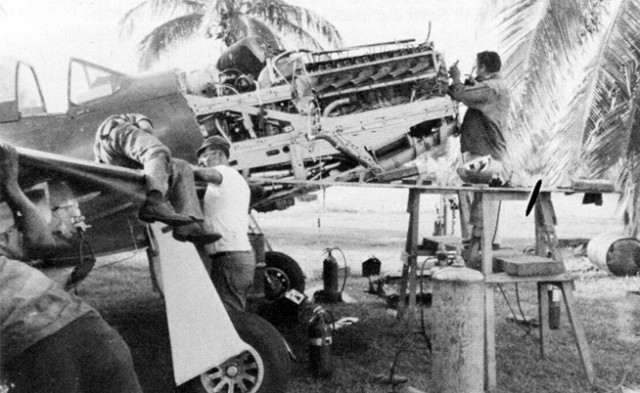
In the days that followed , it was the Salvadorian Army and Air Force that suffered most from the counter strikes of FAH. The Honduran Air Force also launched a bomb run on Ilopongo AFB with a C-47 later that same night , but with even worse results, no damage or even a bomb crater was ever found, while the pilots seriously claimed to have blown apart the Enemy HQ’s!
But the FAH Corsairs did better, they were able to knock out a larger part of the enemy fuel storage tanks on airport and sea port, and FAH Major Soto became the Ace of that war by shooting three FAS Fighters out of the air in less than the 100 hours that this war lasted. For more information about this war and my troubled visit to the Toncontin AFB, I refer to my book “The Dakota Hunter”. For a sneak preview inside, reviews and ordering, you’ll find more details below.
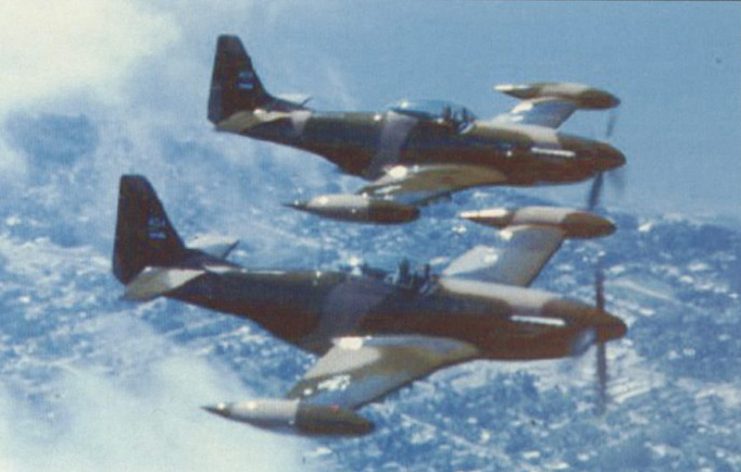
Tribute to the P-51 MUSTANG. The genesis of the Cavalier Mustang II in the late 1960s was not even the end of the development of USAAF most successful WWII fighter. What you see here in the photo above is the very last of the line: The sleek Turbo Prop Cavalier Mustang III that was intended in a role as Close Air Support / Counter Insurgency Aircraft.
Cavalier was sold and the ultimate Mustang came under the label of Piper as the PA-48 Enforcer. With a Rolls-Royce Dart 510 turboprop mounted in a Mustang II air frame, it had a radically increased performance and payload. Despite numerous sales pitches to the USAF neither the U.S. military nor any foreign operators purchased the Turbo Mustang III.
Note the absence of the underbelly air scoop, no longer needed with the Turbo engine, the “fat” paddle blades of the propeller for better handling of the higher engine power, huge wingtip tanks for more range and what seems the removal/ photo shopping of the original marks on the vertical and horizontal tail with an N-registration barely visible.
With the maiden flight of the North American Mustang on 26 October 1940 now 75 years ago, it is a tribute to the design of this beauty that could fly as an operational fighter/ interceptor for so many more years after WWII , quite probably one of the longest surviving piston powered fighters in military service. While the aircraft started its initial career (for the RAF) even before the USA entered WWII, the very last P-51 D’s flew in the service of the Dominican Air Force operational until 1984! Bravo for this icon of US Craftsmanship and Technology, the plane that I loved most as a young kid (next to the Dakota/DC-3/C-47).
I must have built dozens of models of both aircraft, the Mustang even as a large RC model when I was 13-14 years old. I crashed it beyond repair on its maiden flight, but my love never faded for this legendary P-51. I designed this pennant for the 75 years celebration of its Maiden Flight and have it on my wall as a souvenir, reminding me of the crashed RC model which cost me a year to built but only a minute to break! The 2 feet long pennant is for sale in my web shop.
For more information about my book The Dakota Hunter, please come to dc3dakotahunter.com where you can have a sneak preview into the 250 unique photos of my book.
You can order the book directly at my website dc3dakotahunter.com at Amazon , Barnes & Noble, Bol.com etc
Read the very positive reviews at Amazon, Order and Review of the Dakota Hunter!
The travel experiences of more than 20 expeditions all over the Globe have been condensed in 320 pages, the book reads like an adventure film. In search for the last and lost DC-3/ C-47 whereby I also have odd encounters with many other vintage aircraft, that survived in this world.
